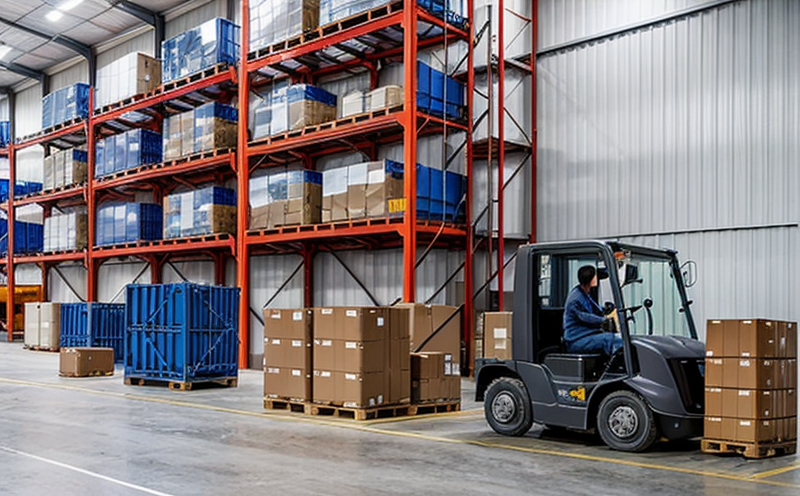NASA-STD-8739 Materials & Processes Certification Testing
The NASA Standard 8739 (NASA-STD-8739) is a critical document that establishes the requirements for materials and processes used in the design, development, test, and production of space hardware. This standard ensures that all materials meet the stringent environmental conditions encountered by aerospace systems during launch, operation, and re-entry into Earth's atmosphere.
Our laboratory specializes in providing comprehensive NASA-STD-8739 certification testing services, ensuring compliance with this standard for a wide range of materials used across various sectors. This includes metals, composites, polymers, and coatings that are critical to the aerospace industry. Our expertise extends beyond mere compliance; we help our clients optimize material selection and processes by providing detailed test reports that offer actionable insights.
Compliance with NASA-STD-8739 is essential for companies involved in space missions as it ensures reliability and durability of components, which are vital to mission success. The standard covers a broad spectrum of tests including mechanical testing, thermal cycling, chemical resistance, and biodegradability assessments. It also includes specific procedures for stress corrosion cracking (SCC) susceptibility testing and fatigue life determination.
Our team works closely with clients from the aerospace sector to understand their unique requirements and challenges. We offer a tailored approach that not only meets but often exceeds NASA's stringent standards. Our facilities are equipped with state-of-the-art equipment capable of replicating space environments, allowing for accurate simulation of real-world conditions.
By leveraging our expertise in this field, we help organizations navigate the complexities associated with materials and processes certification, ensuring they can confidently proceed to the next phase of their projects without the risk of non-compliance. This not only saves time but also reduces costs by preventing costly rework or delays due to unforeseen issues.
Our commitment to excellence is reflected in our rigorous quality control measures and our use of internationally recognized standards such as ISO, ASTM, EN, IEC, and others. Our team comprises seasoned professionals who are well-versed in the nuances of NASA-STD-8739, ensuring that every test we conduct adheres strictly to these guidelines.
Our clients benefit from our deep understanding of the aerospace industry's needs, which allows us to provide customized solutions that address their specific challenges. Whether it’s selecting materials for a new spacecraft design or optimizing existing processes, our services play a crucial role in ensuring success across all stages of project development.
Benefits
- Compliance Assurance: Ensure that your materials and processes meet NASA's stringent standards.
- Cost Savings: Avoid costly rework or delays by ensuring compliance from the outset.
- Enhanced Reputation: Gain recognition for adhering to high-quality standards, enhancing your reputation in the industry.
- Informed Decision-Making: Receive detailed test reports that provide valuable insights into material performance and process efficacy.
- Regulatory Confidence: Meet regulatory requirements with confidence, knowing you are working within NASA's guidelines.
- Optimized Processes: Identify areas for improvement in your materials and processes through comprehensive testing.
International Acceptance and Recognition
NASA-STD-8739 is widely recognized not just within the United States but globally. Its acceptance by regulatory bodies across different countries ensures that any product certified under this standard can be used internationally without additional scrutiny. This recognition fosters a seamless integration of international collaborations, which are crucial in the rapidly evolving aerospace and aviation sectors.
Our laboratory’s certification services are not confined to North America; we work with clients from various parts of the world, including Europe, Asia, and beyond. By adhering strictly to NASA-STD-8739, our clients ensure that their products are accepted in diverse markets around the globe, thereby opening up new opportunities for business expansion.
The international acceptance of this standard is further bolstered by its alignment with other global standards such as ISO and ASTM. This compatibility ensures that materials certified under NASA-STD-8739 meet the same rigorous quality benchmarks used across different industries worldwide. Consequently, our clients can leverage these certifications to enter new markets more easily.
The widespread acceptance of NASA-STD-8739 also contributes significantly to the advancement of space technology and engineering practices globally. By setting a high bar for materials and processes in aerospace systems, this standard encourages innovation and continuous improvement within the industry.
Use Cases and Application Examples
The NASA-STD-8739 certification testing is particularly relevant for companies involved in the design and manufacturing of space hardware. This includes everything from structural components to electrical systems, propulsion units, thermal protection systems, and avionics.
Example 1: Structural Components: For instance, when designing a new spacecraft, engineers need to ensure that all materials used can withstand extreme temperatures and pressure changes during launch and re-entry. By subjecting these components to NASA-STD-8739 certification testing, they gain confidence in their durability and reliability.
Example 2: Electrical Systems: Similarly, electrical systems within spacecraft must be capable of functioning reliably under harsh conditions. Testing materials used in these systems ensures that they can maintain conductivity even after exposure to high levels of radiation and temperature fluctuations.
Example 3: Propulsion Units: The propulsion units are critical for the successful operation of a spacecraft. Ensuring that all materials involved meet NASA-STD-8739 standards guarantees their ability to perform efficiently under the rigorous demands placed on them during mission execution.
Example 4: Thermal Protection Systems: These systems play an essential role in protecting astronauts and equipment from intense heat generated during re-entry into Earth's atmosphere. Testing materials used in these systems ensures they can provide adequate protection as required by NASA standards.
Example 5: Avionics: The avionic systems aboard spacecraft are complex and critical for navigation, communication, and other vital functions. Ensuring that the materials used in these systems meet NASA-STD-8739 requirements helps guarantee their reliability under various operational conditions.





